Taking care of livestock in the winter is where the men are separated from the boys. Well below freezing temperatures, deep snow, ripping winds, frozen water…these are some of the challenges winter brings. Living in north central Massachusetts, we get the snow and frigid subzero temperatures, so winter is real around here. I get asked a lot about how we care for our animals in the cold months, as it seems to be a concern for people new to keeping livestock. When it comes to the goats, there really are two things that are of the upmost importance: they need to be dry and in as draft free of an area as possible. They can handle the coldest of temperatures as long as they are dry, their bedding is dry, and they have protection from drafts.
While my goats are spoiled rotten with their organic/soy free/non gmo feed, organic second cut hay, and constant doting, I consider myself to be pretty old school when it comes to animal husbandry. I am a firm believer that animals were built to handle inclement weather. They have thick coats, snuggle to stay warm, and as ruminants their fermenting bellies act like internal space heaters. So, this means no heat lamps or additional heat sources in the barn. Now not saying these couldn’t or shouldn’t be used in life or death situations. But, these supplemental heat sources throw their bodies out of whack and make it difficult for them to self regulate with constant exposure. Not to mention the extreme danger of a fire. I have been known however to wake up 1-2 times in the middle of the night when we have real bad cold snaps (like last year when it was -20F+ for weeks on end) to suit up and go check on the girls. So, what do I do to keep our herd going throughout the cold months? Read on friends.
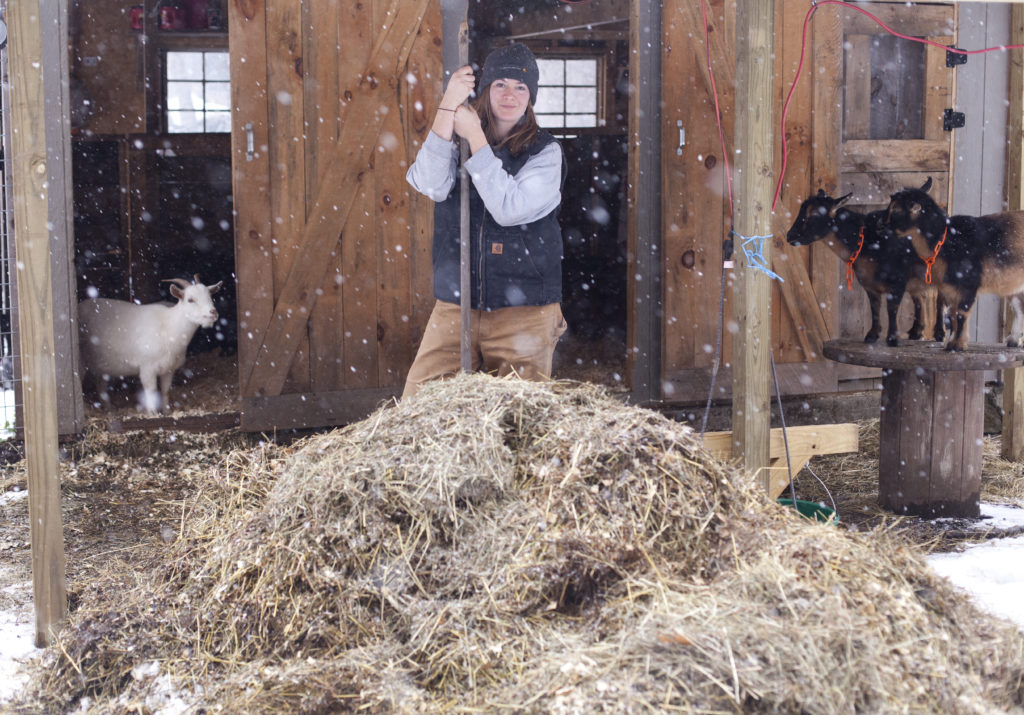
Fresh Water and Night Time Feedings
While there are several “hacks” you hear out there for keeping water from freezing with salt water in a pop bottle floating in water, or a bucket stuffed in a tire with insulation, I don’t use them. Frankly, we have too many animals and uhhh the whole full time job thing gets in the way too. We are all about the heated buckets and stock tank heaters around here to ensure that everyone has access to thawed and fresh water all day no matter the temperatures.
I keep out two 2-gallon heated buckets for the does (and Annie girl) , and one bucket for the boys. Every night I dump whatever water is in the buckets and replenish with fresh. Just because it’s hot out doesn’t mean the goats drink any less water. If anything, I find they drink just as much if not more sometimes than in the summer. My goats however, are spoiled rotten snobs and if the water isn’t replenished daily, I will have an uprising on my hands.
In an added measure to help them stay warm throughout cold nights, I always feed their daily grain during evening chores. The grain paired with their evening 2nd cut hay ration keeps their rumens going strong and digesting throughout the night. Fat bellies full of fermenting feed and hay act like internal space heaters keeping them warm and happy throughout the night.
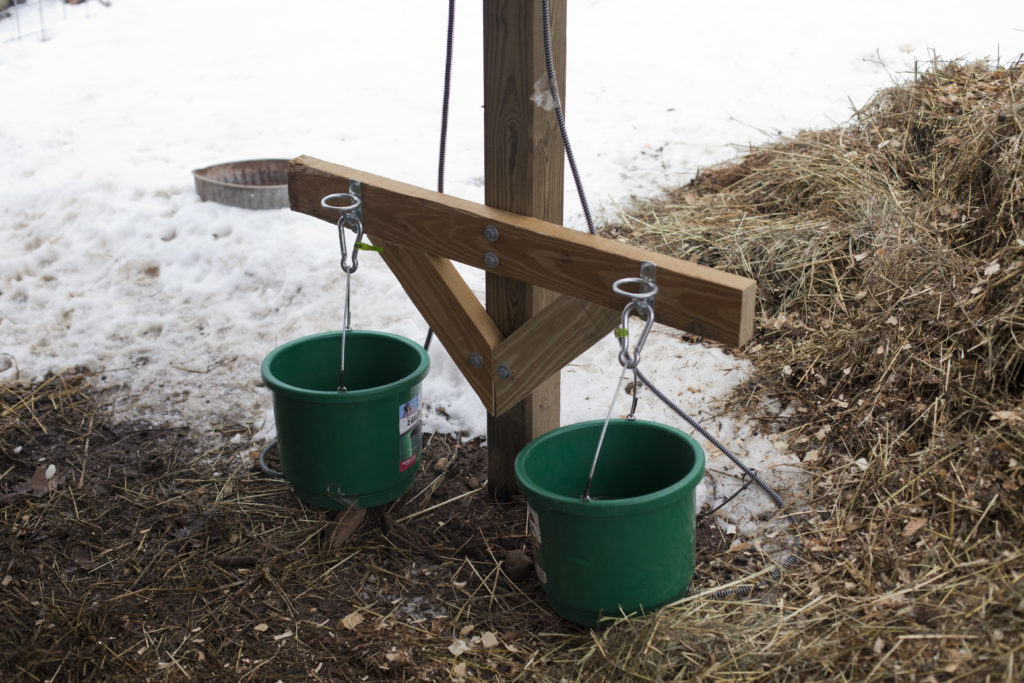
Proper Bedding
Bedding material is a matter of personal preference and finding what works best for you. For the past two winters I have tried (and failed) to implement a deep litter method using a combination of straw, hay waste, and pine shavings. Because the floors of my stalls are cement, I thought this would help the goats stay off of the cold cement to stay warm. While I know several people that this method works well for, it has yet to work for me and this winter I have accepted defeat and kissed it goodbye. My stalls are too small causing all of the bedding to get wet quickly, and wet bedding in the winter is the enemy. Since the doors to enter the stalls from inside the barn swing inward, adding fresh bedding on top of old bedding piles it high which prevents me from being able to even open the door. I have spent more time digging out certain areas (like behind the door so I could open it) and wet spots (which is basically the entire stall) trying to salvage any usable bedding than its worth.
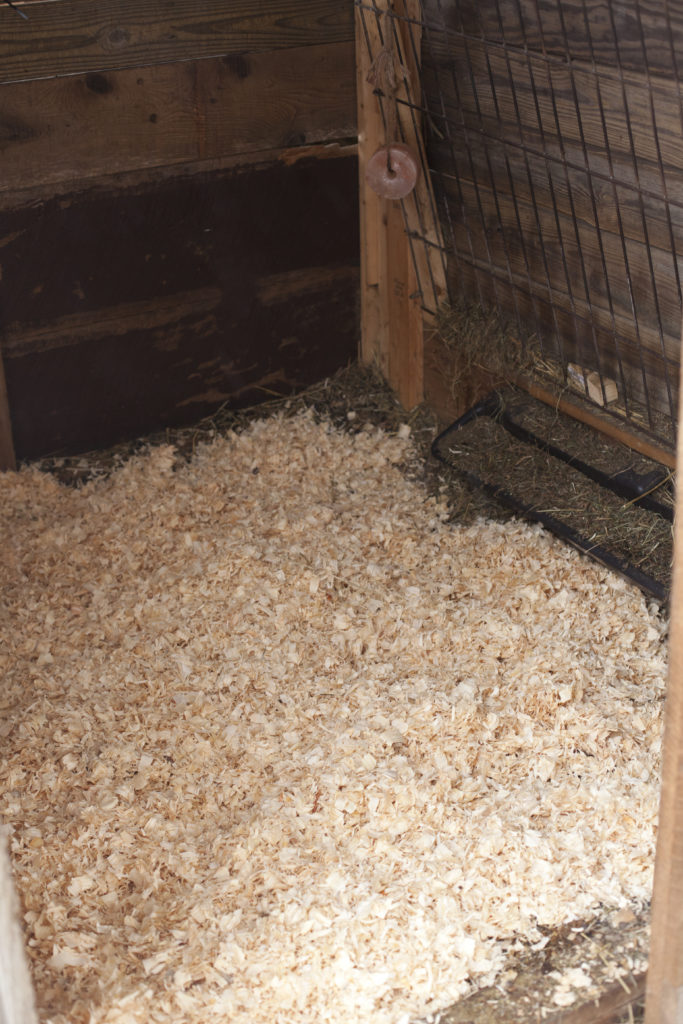
This year I am foregoing this method and am using rubber stall mats to provide a barrier against the cement floor. I am also utilizing a combination of fine pine shavings and absorbent stall refresher to try to make the shavings last between cleanings. Because pine shavings are easier to work with than straw or wasted hay and make spotting wet spots easier, every day or so I will remove any wet spots I can see and give a light sprinkle of PDZ stall refresher. This is an organically approved, natural, and compostable additive that will absorb moisture and ammonia odors in the bedding. It will allow me to stretch the bedding for a week or so depending on the weather, and with some light reapplication of shavings between cleanings it will keep the bedding thick to provide warmth and a good layer to snuggle down into. Regular mucking of the stalls will also be considerably easier because I won’t have months worth of compacted wet bedding to pull out when it’s freezing outside.
So to recap, some things I do to help the bedding stay clean and dry in between regular stall clean outs:
- Designate a stall that you use to go in and out of. This way you are only tracking snow in one, so that you maintain at least one stall stays drier thanks to your wet feet staying out of it.
- Spot clean manure/urine daily. During morning and evening chores I scoop out any wet shavings or heavy manure areas. It takes 2 minutes and helps keep the bedding clean and dry.
- After spot cleaning, give light sprinkling of stall refresher to absorb odors, ammonia, and moisture. Add some fresh shavings as needed, every other day or so.
- Use stall mats. Our stalls have concrete floors, so last year I invested in rubber stall mats. Not only does it help the goats stay warmer as opposed to being on the concrete floor, it makes cleaning so much easier.
- Pick a cleaning schedule and stick to it. I do a full clean out of the stalls once a week no matter what. You never know what the weather may bring, and by doing regular cleanings you have less build up meaning it takes less time to clean them.
Draft Control
Keeping your goats and their bedding dry is only half the battle. While avoiding any kind of dampness is extremely important to help them stay warm and prevent respiratory issues, drafts are equally as dangerous. Frigid temperatures are tolerable for goats, but nothing can take one down quicker than exposure to cold winds. Our stalls have sliding doors that allow me to either fully shut the door if needed, or close it part way. The girls and Annie don’t like being shut in at night and it causes more problems than it solves. However, partially closing the stall doors leaving it open just enough to go in and out is good enough. They will cuddle behind the door which blocks them from the harsh wind, but they still have the ability to go outside if they choose to.
While the boys don’t live in the barn, their house was designed with the opening offset to one side. This way they can cuddle in the corner away from the door opening that protects them from the wind. It is essentially the same concept as the sliding doors, only the opening is a fixed size and instead of the sliding door they have a wall.
Depending on the set up if sliding doors or any door is not an option, sacrificial hay/straw bales work as great wind barriers as well. This is something that I have done in the past, and while it may not be the prettiest thing, it is a cheap and effective alternative. Stacking them up gives the goats something to lay down behind and get out of the wind.
The Overhang
While the overhang doesn’t really help the goats stay warm, it does give additional communal space out of the elements. In the dead of winter when they don’t want to go out in the snow, cabin fever sets in and it can get ugly. The 96 square foot overhang gives them space to move around, stretch their legs, and play on their wire spools even if it’s snowing. Goats hate precipitation, and will refuse to leave the barn. Previously only having the two stalls made them a little crazy during long stretches of snow because they didn’t have a whole lot of space to move around. But, by adding this additional living space for them, I can already tell it’s going to make a world of difference when the snow is flying.
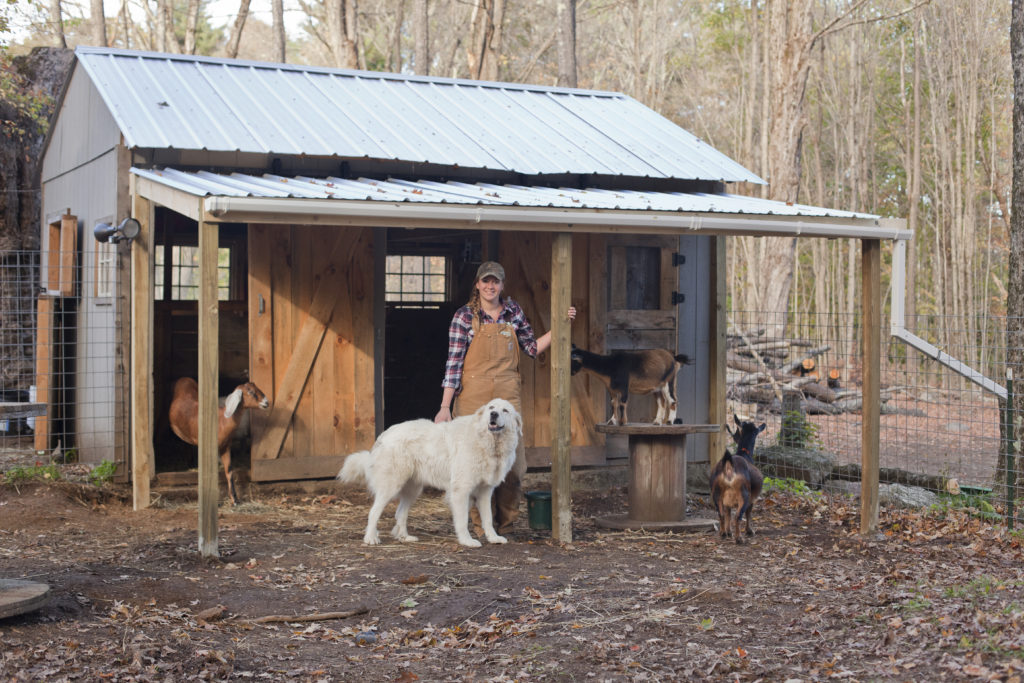
After having goats now for three years, I finally feel like we have the best winter set up we can possibly have. Each year we have learned and improved, the biggest being when we built the mini barn last year. We certainly have come a long way from Karen and Alan living in a dog house their first winter! Whatever your set up is, it’s all about finding what works best for you. Whether your goats live in a dog house or a barn, you have dirt floor stalls or cement, there are ways to keep your animals comfortable and safe throughout the winter months. It may not be prettiest or the fanciest, but all that matters is that it gets the job done.
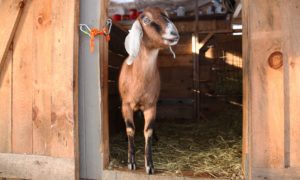
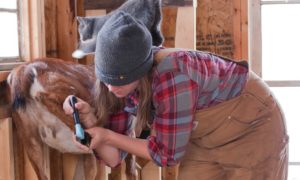
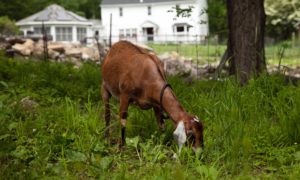
Pingback: Preparing a Doe for Kidding and Pregnancy Care | The Modern Day Settler
Pingback: Tour of the Mini Barn | The Modern Day Settler
I found your Instagram about a month ago and you’ve quickly grown to be one of my favorite resources! I love that you are so honest about what has worked, what hasn’t and why. I am slowly dipping my toes into homesteading this year with chickens and a larger garden then i have ever had, but the goal is to have goats and pigs in the coming years. You’ve answered so many questions for me in this single article then i have found from various internet searches in weeks! I am currently binge reading your blog lol cant wait to start the youtube videos!
Jamie
Jamie I’m so happy you found me! I hope you learn a lot and are ready to hit the ground running when it’s time to get your animals!